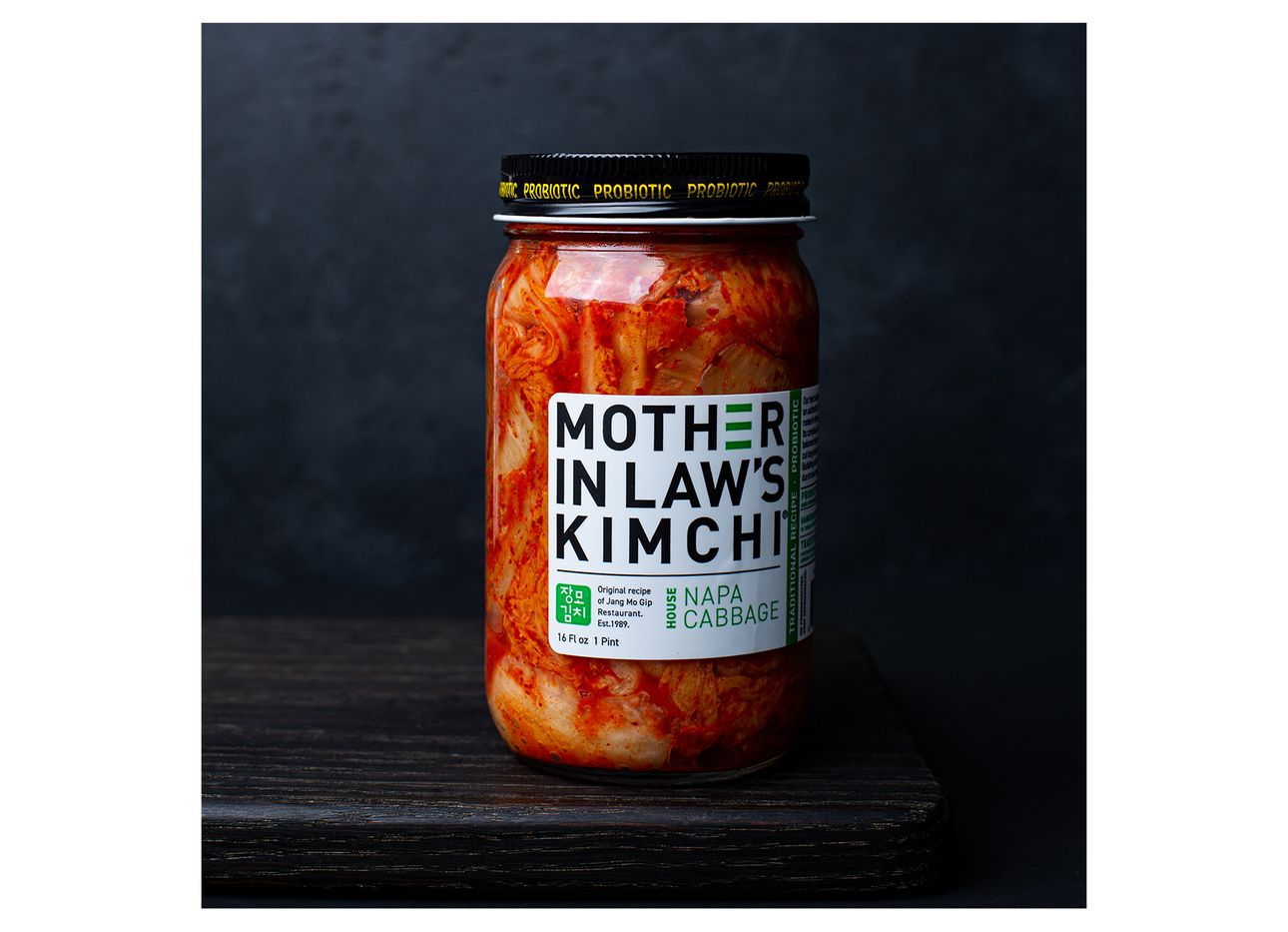
Mother-in-Law’s Founder Lauryn Chun Thinks of Kimchi as a Verb
Kimchi’s layered aroma first entered Lauryn Chun’s nostrils during her childhood in Korea, where her family regularly ate the traditional concoction of seasoned and fermented vegetables. After immigrating to the United States, they continued to enjoy the food—but, at least for Chun, with a more complicated awareness of it, as the spicy, smelly dish was poles apart from most American fare. Later, after a stint as a tastings editor at Wine & Spirits Magazine and immersing herself in European wines, Chun began to connect the complex scents of wine to those of kimchi, both a result of prolonged fermentation. Kimchi, she felt, deserved a place in the mainstream alongside other fermented foods, such as cheese and beer.
To champion the dish, she launched a line of handmade, small-batch kimchi called Mother-in-Law’s, in 2009. Its first offering, a fragrant Napa cabbage kimchi, was based on a recipe from her mother’s California restaurant, Jang Mo Jip (“Mother-In-Law’s House,” in Korean). “In Korean culture, when a woman marries into her husband’s family, she learns how to make all its good dishes—including kimchi, the most important dish to master—from her mother-in-law,” Chun says. “So Mother-in-Law’s is terminology for good food, good kimchi.”
Since then, Chun’s business has expanded to offer other flavors as well as a robust line of gochujang, а collection of red chili pastes and sauces like those found in a typical Korean pantry. But kimchi remains the core of the brand’s identity. We recently spoke with Chun about the food’s contentious odor, and how a person’s upbringing shapes their olfactory references.
How do you describe kimchi’s smell?
I’ve asked myself that question a lot. There are different scent stages of kimchi that develop as it’s made. The first step is combining garlic, ginger, other basic spices and seasonings. This has a bright, fragrant smell. Then you put in some fish sauce, which has salty notes and creates a potent visual pattern.
During the initial fermentation phase, the kimchi takes on a more vinegary smell, with more acidity, more tang. After a month, you start to smell a gaminess, like certain components of mushrooms and cheese, from the chili flakes. That’s the scent that then continues to develop and to change.
It seems like the food’s aroma and appeal stems less from the ingredients, and more from how time alters them.
Exactly. The kimchi-ing process is a verb: It’s lacto-fermentation, the oldest and most interesting way to preserve vegetables. And, unlike adding vinegar or a culture, kimchi is its own starter. When I first started selling kimchi, in mason jars, I didn’t understand how much action was going on. I’d take the jars to farmer’s markets, and the fermentation force was so strong, it would bend the metal lids!
In those early days, when I was making kimchi in a commercial kitchen, I could hear it. A normal household kimchi is one thing—you’re making a gallon or two at a time. But if you’re making hundreds of pounds of it, you can hear the bubbling, the sound of bacteria. It’s very poetic, how resilient the food is. It’s a life force in itself.
Mother-in-Law’s is one of the first artisanal kimchi brands to be sold on a national scale. How did people react to your product when you were building your business?
People would hang up on me when I called bigger factories to see if they’d be open to manufacturing kimchi for me. They’d say, “We're trying to get rid of bacteria, not introduce new ones.” Kimchi does not fit nicely into the food system as we know it. Other times, they’d have a reaction to its pungency: “I can’t do it.” But mostly, I remember people being open to trying something for the first time, especially little kids. It’s really enlightening to see a whole generation be open to different flavors and foods.
Do you think a person’s upbringing influences how they interpret smells?
I definitely think so. Growing up eating traditional Korean foods, kimchi was a staple that showed up in every meal from a very young age. I thought the pungency of it would ruin my palate for something like tasting a fine wine. While I was at the wine magazine, I remember feeling very insecure about my sense of smell, and of what I thought about when I smelled certain scents.
But that’s the interesting thing about smell—it’s all based on somebody’s cultural past, their reference points, and there’s no wrong way to do it. Once, I was at a wine tasting with some of the best sommeliers and noses from the fanciest restaurants in New York City, and we were blind-tasting first-growth Bordeaux. They said “currant,” “coffee,” and other typical words used to describe the scent of the wine. In my mind, it smelled like my grandmother's house, when she was roasting soybeans to make soy sauce. Both are true.